These quantities make sufficient pastry for a 10in (25cm) double-crust pie.
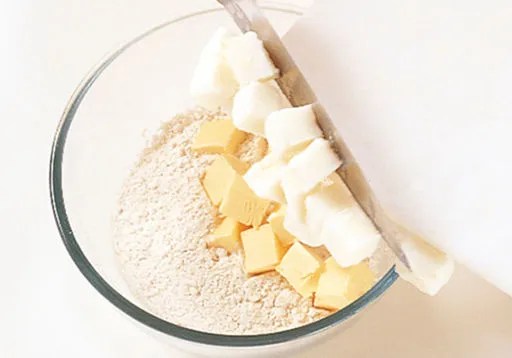
1 Sift 2 cups all-purpose flour into a bowl. Add 6 tbsp each of cubed butter and white vegetable fat, and stir to coat in flour. Add 1/2 cup cold water and, with a butter knife, bind to a lumpy dough.
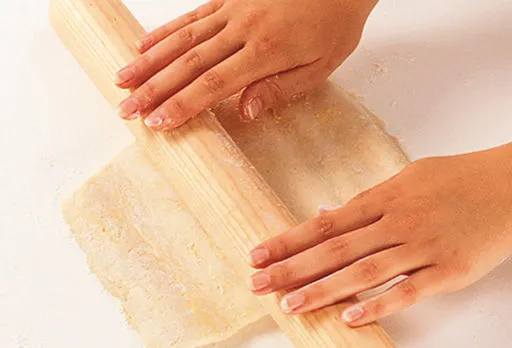
2 Roll out the dough into a rectangle 3 times as long as it is wide. Fold the bottom third up and the top third down. Press the edges with the side of your hand to seal. Wrap and chill for 15 minutes.
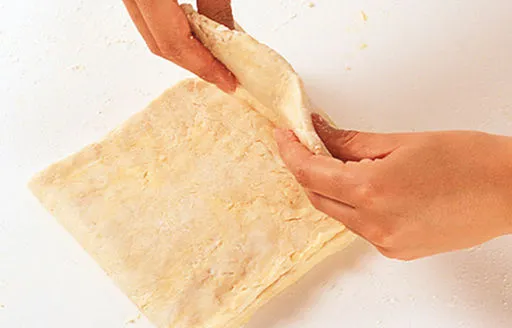
3 Roll out the dough into a rectangle and fold as before. Turn the dough so the folded edges are to the sides again. Repeat the rolling, folding, and turning twice more. Wrap and chill for 30 minutes.
Basic choux pastry
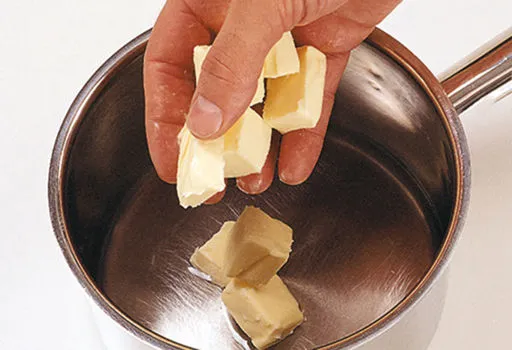
1 Put 4 tbsp butter, cut into cubes, into a heavy saucepan with 1/2 cup water and heat until the butter melts. Bring to a boil.
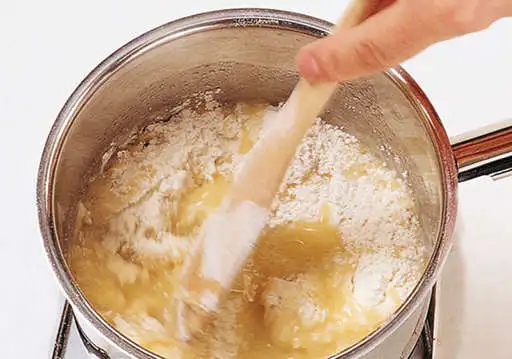
2 Remove from the heat and add 1/2 cup sifted all-purpose flour and a pinch of salt, if preferred. Stir vigorously until the mixture forms a soft ball.
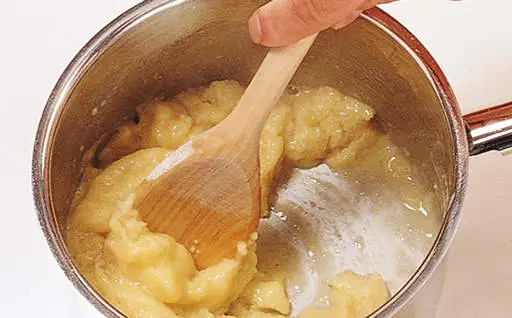
3 Let cool slightly, then gradually add 2 lightly beaten large eggs, beating well between each addition, to form a smooth, shiny paste.
Making a pastry crust
Careful handling of pastry dough should ensure it does not shrink or distort when baking.
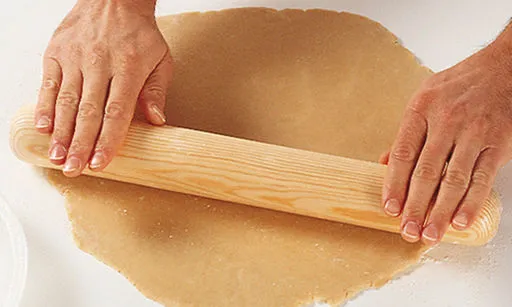
1 Put the pastry dough on a floured work surface and flour the rolling pin. Roll out into a round, starting in the middle each time and lifting and turning the pastry round a quarter turn after each roll.
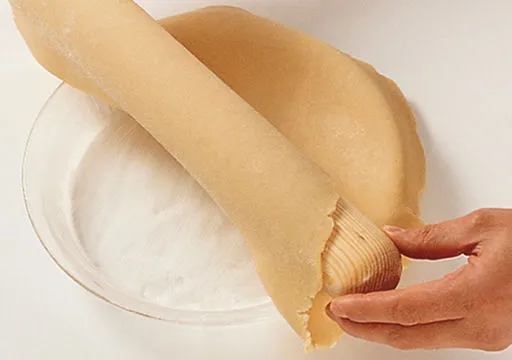
2 If lining a pie dish, roll out the pastry dough to a round 2in (5cm) larger than the top of the dish; a pastry lid should also be 2in (5cm) larger. Roll the dough up loosely around the rolling pin, and unroll over the dish.
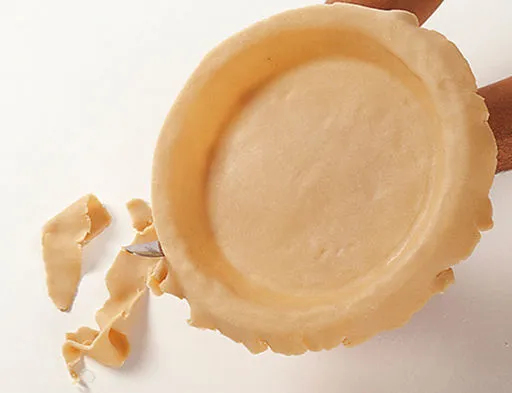
3 Gently ease the dough into the dish, pressing it firmly and neatly into the bottom edge. Be very careful not to stretch the dough. Carefully trim off the excess dough with a butter knife. If there are any holes, patch them with bits of dough.
Baking blind
A pastry crust may be partly baked before adding a filling, to help it stay crisp, or it may be fully baked if the filling itself does not need to be cooked. The dish is filled with baking beans to weigh it down.

1 Prick the pastry crust all over with a fork. Line with a piece of foil or parchment paper, allowing it to come high above the rim so that it can be lifted out easily after baking.

2 Fill the crust with ceramic baking beans, dried pulses, or uncooked rice, and bake in a preheated oven at 375°F (190°C) for 10 minutes.
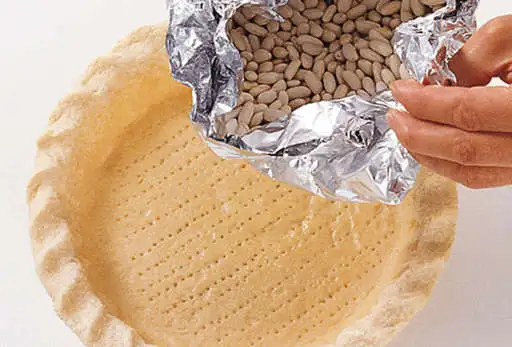
3 Remove the beans and foil. Return the pan to the oven and bake for 5 minutes (part-baked) or 15 minutes (fully baked). If the dough rises during baking, gently press it down.
Shaping Danish pastries
Crescents
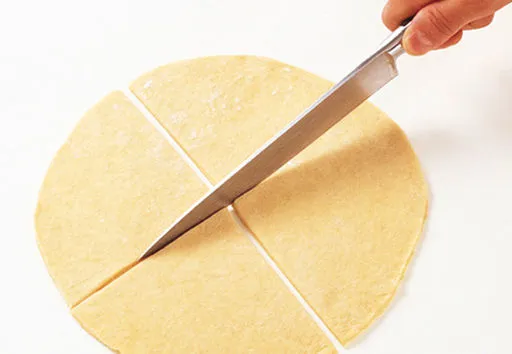
1 Roll out the dough into a 9in (23cm) round. Cut into quarters. Place a small roll of almond paste at the wide end of each piece.
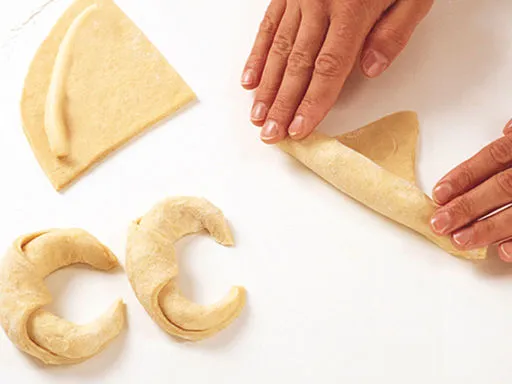
2 Starting from the wide end, roll up each dough quarter loosely around the almond paste, then curve the ends to form a crescent.
Kites
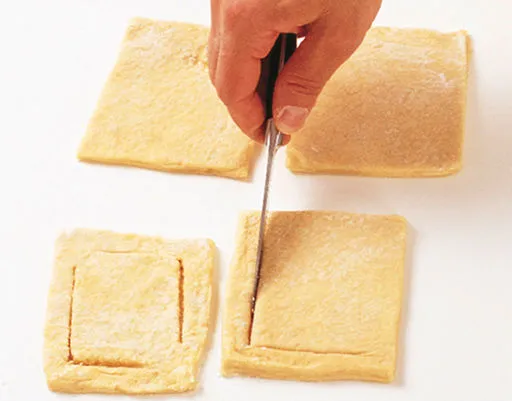
1 Roll out the dough into an 8in (20cm) square. Cut into 4 squares. Make cuts around 2 corners of each square, 1/2in (1cm) in from the edge.
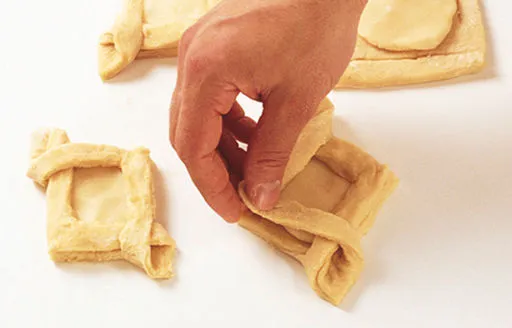
2 Place a round of almond paste in the middle of each square. Lift each cut corner and cross it over the almond paste to the opposite corner.
Pinwheels and Envelopes
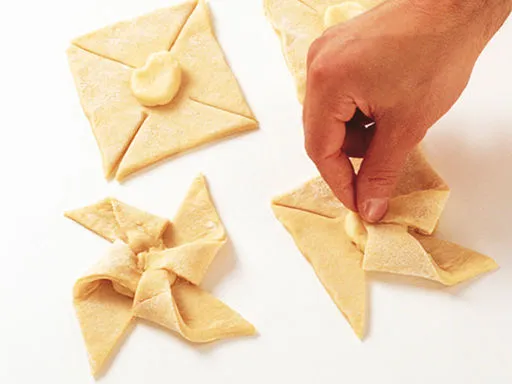
For pinwheels: roll out the dough and cut into 4 squares as for kites. Put almond paste in the middle of each. Cut from the corners almost to the middle. Fold in alternate points.
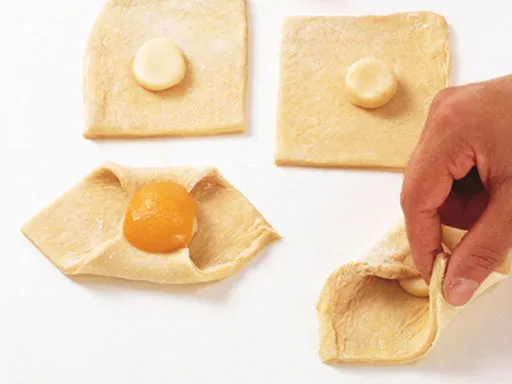
For envelopes: roll out the dough, cut into 4, and fill as for pinwheels. Fold 2 opposite corners into the middle. Top with a half apricot, cut-side down.
Steamed puddings
Light cakes and rich suet mixtures can both be gently cooked by steaming.
1 comment